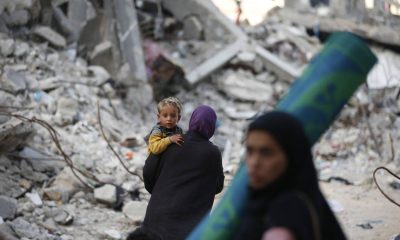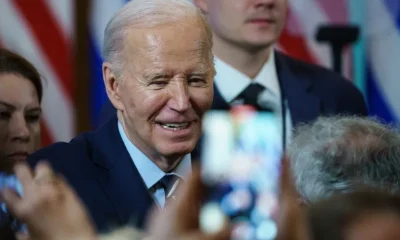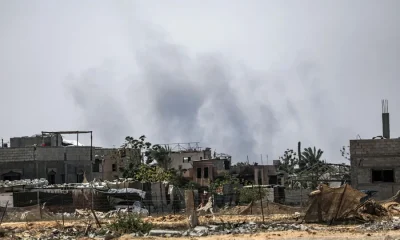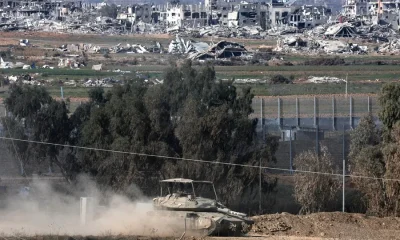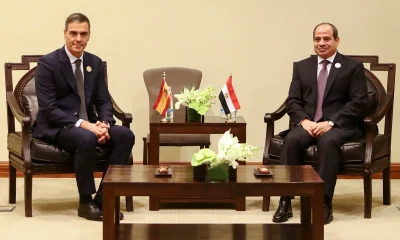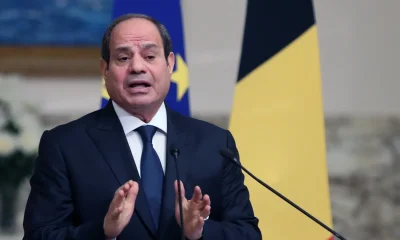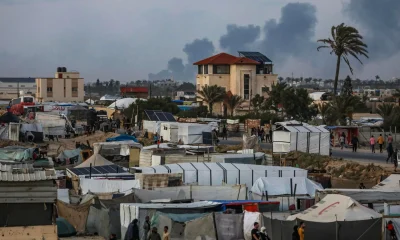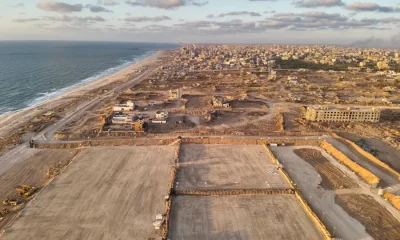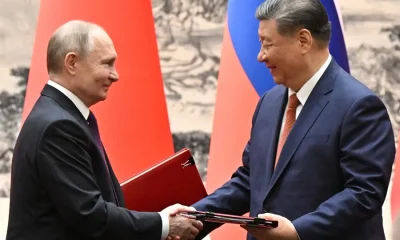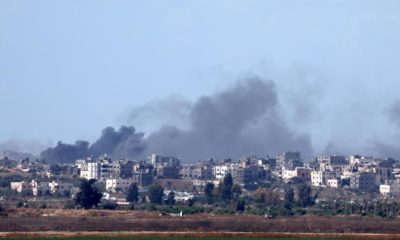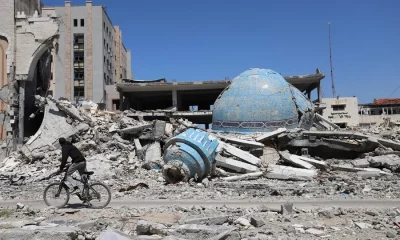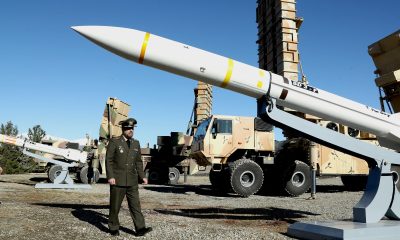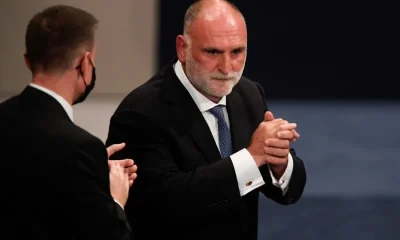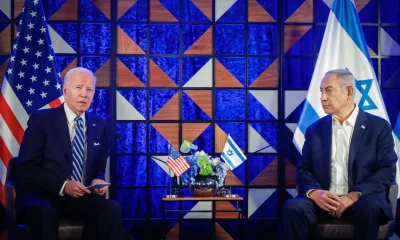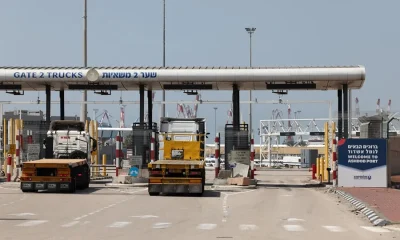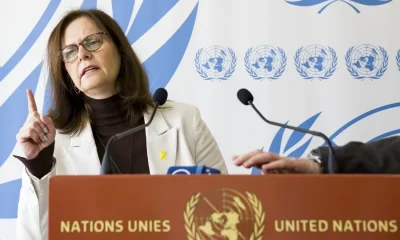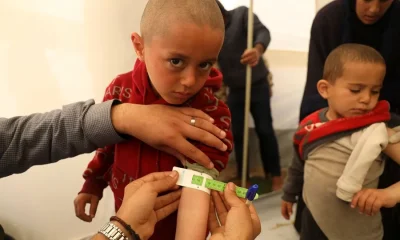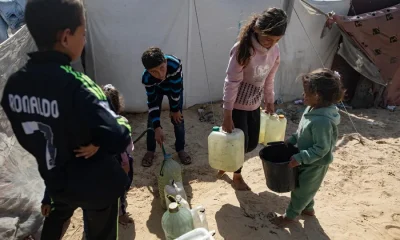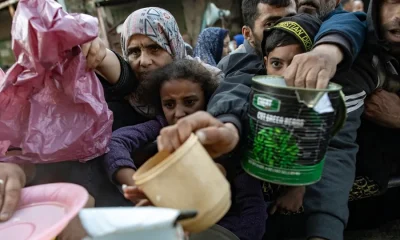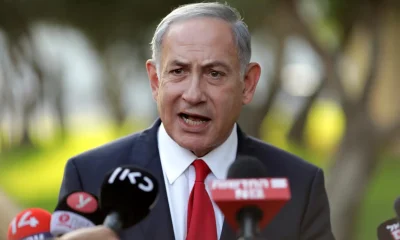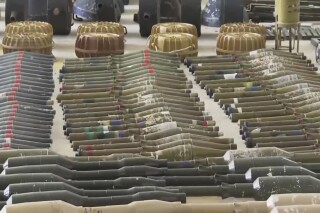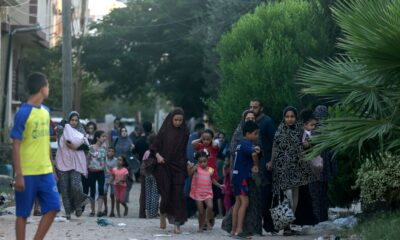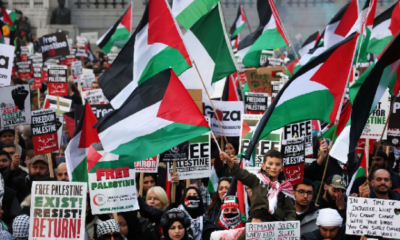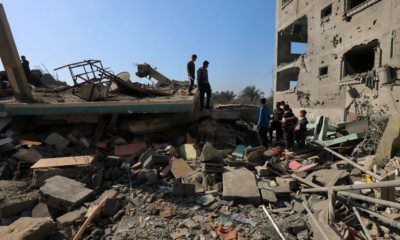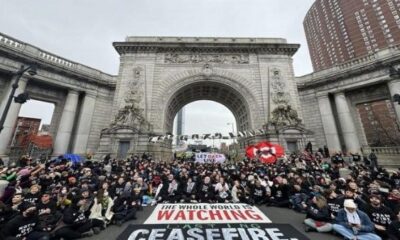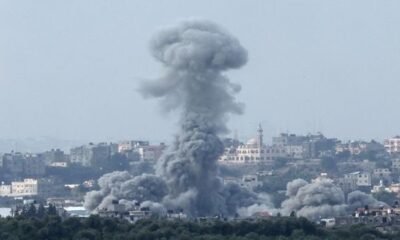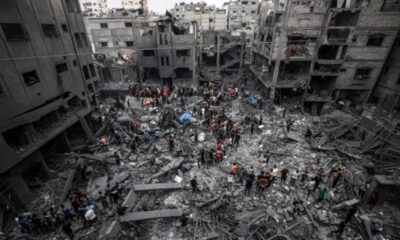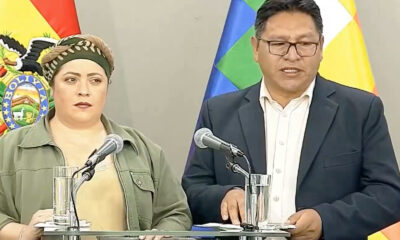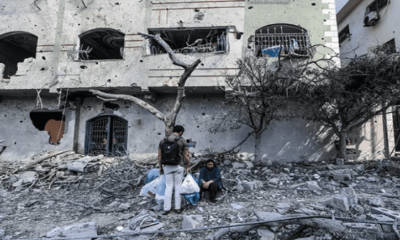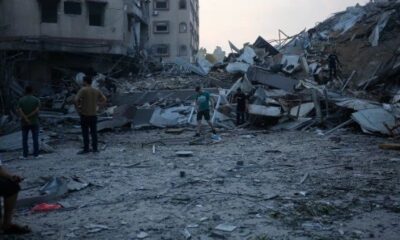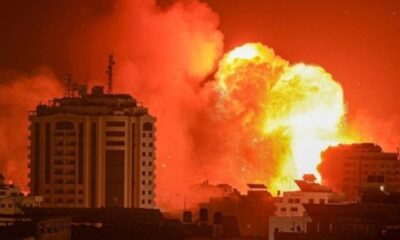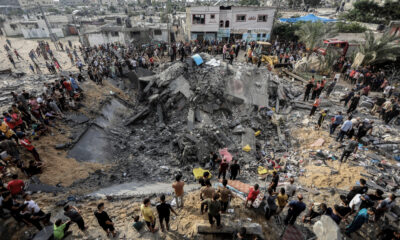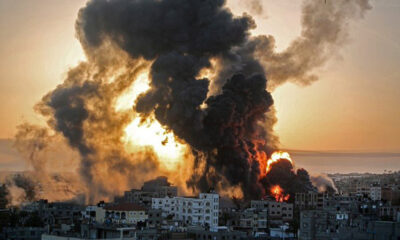International
The Israeli Army withdraws all its troops from the south of the Gaza Strip
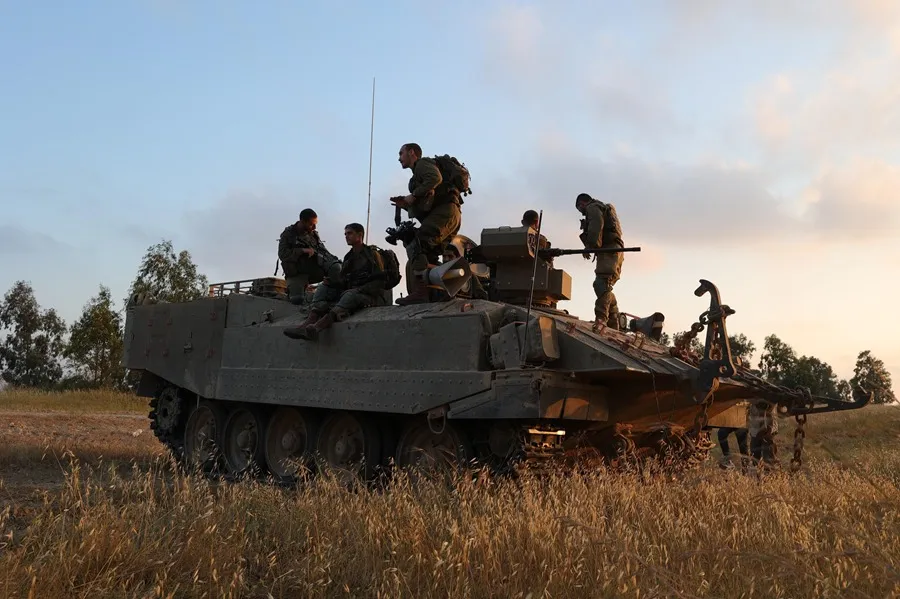
The Israeli Army withdrew all its ground troops from the south of the Gaza Strip last night, and there is only one brigade left in the enclave, a military source confirmed to EFE on Sunday.
The withdrawal comes after four months of fighting in the Jan Yunis area and six months after the beginning of the war between Israel and Hamas in Gaza, where more than 33,100 Palestinians have already died, most of them women and children.
Currently there is only one Israeli brigade left in the Palestinian enclave that is responsible for securing a corridor between the south of Israel and the Gaza coast, blocking the passage to the north of the Strip and facilitating operations in the center and north of the territory.
The two main hospitals of this southern city, Al Amal and Naser, have been devastated and inoperative after the siege of the Hebrew troops during these months under the thesis that there was the presence of alleged fighters in these complexes.
“Dozens of suspects have been delivered to Shin Bet and Unit 504 of the Directorate of Military Intelligence to be further interrogated,” the Army said in a statement on April 2.
Likewise, the Israeli Army reported on Sunday that, before its withdrawal, its combat units have carried out the last operations in the Al Amal neighborhood to finish “dismantling the terrorist infrastructure.”
In a message in X, former Israeli Minister of Justice Gideon Sa’ar criticized the withdrawal of troops, assuring that “the continuous decrease in the size of the Israeli forces” in Gaza “has distanced us from achieving the objectives of the war.”
Israel’s next target in Gaza seems to be the already announced military incursion into Rafah, in the south of the enclave, where 1.4 million displaced people live and there are still, according to the Army, four battalions from Hamas; an incursion opposed by the United States, Israel’s main military ally.
The official death toll in the Gaza Strip reached 33,175 this Sunday, six months after the start of the devastating Israeli war offensive.
More than 14,000 of those deaths, or 42%, are children, while 9,220 would be women, according to the same source. The total number of injured is 75,886, to which must be added about 7,000 bodies that are estimated to remain under tons of debris.
“The Israeli occupation committed 4 massacres against families in the Gaza Strip, causing 38 deaths and 71 injuries in hospitals during the last 24 hours,” the Gazazi Ministry of Health said today in a statement.
Egypt decided to increase the number of trucks with food, medical aid and emergency supplies for the Gaza Strip to at least 300 trucks per day as of this Sunday, the head of the Egyptian State Information Service, Diaa Rashwan, reported in a statement.
This decision, values the note. part of “the directives of President Abdelfatah al Sisi” to increase the humanitarian aid that enters the Palestinian enclave from the Egyptian side of the Rafah border crossing, the only one that does not control Israel, despite the fact that it inspects each cargo that enters from it.
In fact, Egypt denounced on numerous occasions the delays and traffic jams of trucks in northern Sinai due to Israeli inspections and rejections of certain products, which has forced the Arab country to launch aid by air to appease the humanitarian crisis resulting from the conflict.
According to the latest report of the United Nations Agency for Palestinian Refugees (UNRWA), “since the beginning of April, an average daily of 169 aid trucks have entered Gaza through the land crossings of Kerem Shalom and Rafah. This figure is still well below the operational capacity of both crossings and the target of 500 trucks per day.”
Israeli Prime Minister Benjamin Netanyahu reiterated this Sunday, when it is six months of war in the Gaza Strip, that there will be no truce agreement if the 133 hostages still in the hands of Hamas do not return home, adding that Israel will not give in to the “extreme demands” of the Islamists.
“I made (something) clear to the international community: there will be no ceasefire without the return of the kidnapped. It just won’t happen,” Netanyahu said today in a speech before meeting with his cabinet, and recalled that the Administration of U.S. President Joe Biden shares his same opinion.
He added that Israel does not oppose a truce agreement and blamed Hamas for “extreme demands” whose objective is to end the war “to guarantee its survival, its rehabilitation, (and) its ability to endanger” Israeli citizens and soldiers again.
This same night a massive anti-government demonstration has been called in Jerusalem, in which not only activists but also some of the relatives of the captives will participate, who blame Netanyahu for being more concerned about his political survival than about returning his family home.
The Israeli Minister of Defense, Yoav Gallant, assured on Sunday that Israel has completed preparations to face “any scenario” against Iran, which has been threatening for days to retaliate for an alleged Israeli attack on the Iranian embassy in Damascus (Syria).
Gallant made these statements after the meeting held today with the head of the Israeli Army Operations Directorate, Oded Basiuk, and the head of the Military Intelligence Directorate, Aharon Haliva, according to a statement from the authorities.
Israel is on alert after the attack that took place last Monday, April 1, against the Iranian embassy in Damascus, the capital of Syria, in which at least 19 people died, including the highest-ranking commander of the Iranian Revolutionary Guard, Mohamed Reza Zahedi.
Iran insisted, after celebrating Zahedi’s funeral yesterday, that this attack will not be “unpunished” and that there will be a response against Israel, whom he accuses of being behind him.
The Israeli press maintains that the Iranian authorities would be planning an attack with drones and cruise missiles against the Jewish State, but also against US targets in the region. Iran considers the White House to be “accomplice” of the attack.
The fear that this attack will reach Israeli territory begins to permeate its citizens, who in recent days have made food.
The concern of the international community that the conflict in Gaza, which is now six months old, goes beyond its borders has been constant during this time, due to the clashes that have taken place between Israel and some Arab countries, which their relationship is more tense than ever in recent decades.
The Lebanese Shiite group Hizbulá announced on Sunday that it has launched a flay of rockets against military bases on Israeli territory in response to an attack by the Jewish State against northeastern Lebanon.
“In response to the enemy’s attacks in the Bekaa region (northeast), the fighters of the Islamic Resistance targeted at 11.10 (local time, 8.10 GMT)” two military bases, one that of Yoav, and another identified as “Kila”, in the Golan Heights occupied by Israel, “with dozens of ‘Katyusha’ type rockets,” the movement said in a brief statement.
The Israeli Army announced that it attacked this morning Hizbulah’s anti-aircraft defense infrastructure in the Baalbek area, northeastern Lebanon, “in response” to a shooting down of an Israeli drone claimed by the Lebanese group after infiltrating its territory, something that happens on a daily basis.
Hizbulah, a close Iranian ally, and the Jewish State have been in intense border clashes since October 8, a day after the outsh of the Gaza War.
International
U.S. and Mexico Reach Deal to Address Water Deficit Under 1944 Treaty

The United States and Mexico have reached an agreement to comply with current water obligations affecting U.S. farmers and ranchers and for Mexico to cover its water deficit to Texas under the 1944 Water Treaty, the U.S. Department of Agriculture said in a statement.
The department уточified that the agreement applies to both the current cycle and the water deficit from the previous cycle.
On Monday, U.S. President Donald Trump accused Mexico of failing to comply with the water-sharing treaty between the two countries, which requires the United States to deliver 1.85 billion cubic meters of water from the Colorado River, while Mexico must supply 432 million cubic meters from the Rio Grande.
Mexico is behind on its commitments. According to Washington, the country has accumulated a deficit of more than one billion cubic meters of water over the past five years.
“This violation is severely harming our beautiful crops and our livestock in Texas,” Trump wrote on Monday.
The Department of Agriculture said on Friday that Mexico had agreed to supply 250 million cubic meters of water starting next week and to work toward closing the shortfall.
Agriculture Secretary Brooke Rollins, quoted in the statement, said Mexico delivered more water in a single year than it had over the previous four years combined.
Trump has said that if Mexico continues to fall short of its obligations, the United States reserves the right to impose 5% tariffs on imported Mexican products.
Mexico’s Deputy Foreign Minister for North America, Roberto Velasco, said that a severe drought in 2022 and 2023prevented the country from meeting its commitments.
International
Several people shot in attack on Brown University campus

Several people were shot on Saturday in an attack on the campus of Brown University, in the northeastern United States, local police reported.
“Shelter in place and avoid the area until further notice,” the Providence Police Department urged in a post on X. Brown University is located in Providence, the capital of the state of Rhode Island.
U.S. President Donald Trump said on his social media platform Truth Social that he had been briefed on the situation and that the FBI was on the scene.
At 5:52 p.m. local time (11:52 p.m. GMT), Brown University said the situation was still “ongoing” and instructed students to remain sheltered until further notice.
After initially stating that the suspect had been taken into custody, Trump later posted a second message clarifying that local police had walked back that information. “The suspect has NOT been apprehended,” the U.S. president said.
International
Colombia says it would not reject Maduro asylum request as regional tensions escalate

The Colombian government stated on Thursday that it would have no reason to reject a potential asylum request from Venezuelan President Nicolás Maduro should he leave office, as regional tensions persist over the deployment of U.S. military forces in the Caribbean since August.
“In the current climate of tension, negotiations are necessary, and if the United States demands a transition or political change, that is something to be assessed. If such a transition results in him (Maduro) needing to live elsewhere or seek protection, Colombia would have no reason to deny it,” said Colombian Foreign Minister Rosa Villavicencio in an interview with Caracol Radio.
However, Villavicencio noted that it is unlikely Maduro would choose Colombia as a refuge. “I believe he would opt for someplace more distant and calmer,” she added.
Colombian President Gustavo Petro also commented on Venezuela’s situation on Wednesday, arguing that the country needs a “democratic revolution” rather than “inefficient repression.” His remarks followed the recent detention and passport cancellation of Cardinal Baltazar Porras at the Caracas airport.
“The Maduro government must understand that responding to external aggression requires more than military preparations; it requires a democratic revolution. A country is defended with more democracy, not more inefficient repression,” Petro wrote on X (formerly Twitter), in a rare public criticism of the Venezuelan leader.
Petro also called for a general amnesty for political opponents and reiterated his call for forming a broad transitional government to address Venezuela’s prolonged crisis.
Since September, U.S. military forces have destroyed more than 20 vessels allegedly carrying drugs in Caribbean and Pacific waters near Venezuela and Colombia, resulting in over 80 deaths.
U.S. President Donald Trump has repeatedly warned that attacks “inside Venezuela” will begin “soon,” while Maduro has urged Venezuelans to prepare for what he describes as an impending external aggression.
-

 International5 days ago
International5 days agoMexico City prepares for 13 million pilgrims at Basilica of Guadalupe
-

 International4 days ago
International4 days agoWashington declares State of Emergency as atmospheric river brings severe flooding
-

 International4 days ago
International4 days agoU.S. to require five-year social media history from tourists under Visa Waiver Program
-

 Central America5 days ago
Central America5 days agoHonduras’ electoral chief reports ongoing technical issues but says results remain intact
-

 Central America5 days ago
Central America5 days agoU.S. accuses Ortega regime of systematic human rights abuses in Nicaragua
-

 Central America5 days ago
Central America5 days agoU.S. finds no evidence of fraud in Honduras election despite delays
-

 International3 days ago
International3 days agoCuba battles out-of-control dengue and chikungunya epidemic as death toll rises to 44
-

 Central America4 days ago
Central America4 days agoOAS and EU urge honduran political actors to respect vote results and avoid unrest
-

 International3 days ago
International3 days agoColombia says it would not reject Maduro asylum request as regional tensions escalate
-

 Central America3 days ago
Central America3 days agoHonduras election crisis deepens as CNE president denounces intimidation attempts
-

 International1 day ago
International1 day agoSeveral people shot in attack on Brown University campus
-

 International3 days ago
International3 days agoEcuador on track for record violence as homicides hit highest level in Latin America again
-

 International4 days ago
International4 days agoSix ecuadorian soldiers jailed pending trial for alleged extrajudicial execution
-

 International1 day ago
International1 day agoU.S. and Mexico Reach Deal to Address Water Deficit Under 1944 Treaty

























